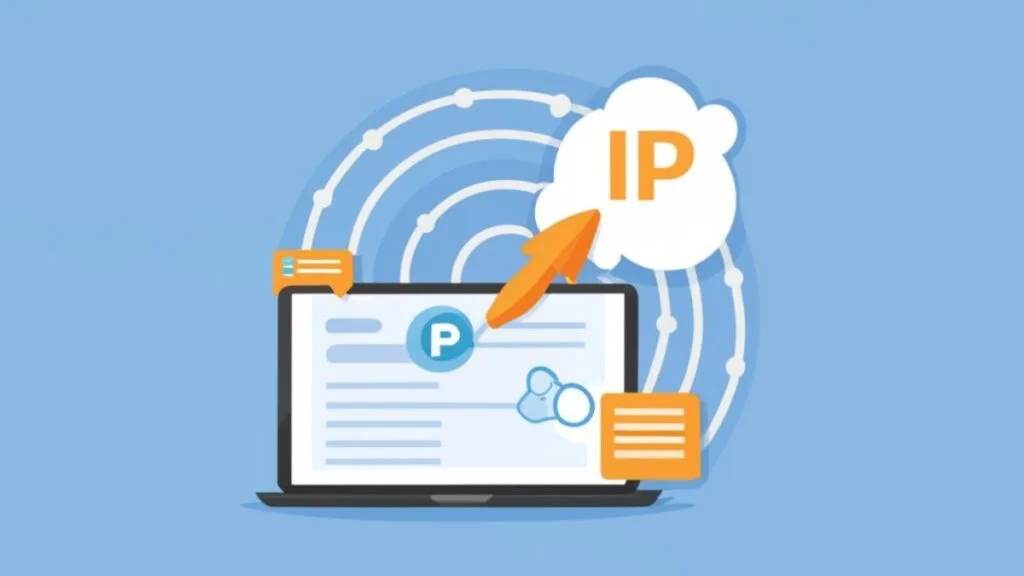Imagine driving down a busy highway where every vehicle has a license plate to identify where it belongs and where it’s headed. The internet works in a very similar way. Instead of cars, you have devices—computers, smartphones, routers, and servers—communicating with one another. And instead of license plates, you have IP addresses. An IP address, such as 185.63.253.200, is a unique identifier that ensures your device can send and receive data properly across the web.
Most of us interact with IP addresses every day without realizing it. Whether you’re streaming a movie, making a video call, or browsing a website, IP addresses make that communication possible. Yet, they’re often overlooked, leaving many people confused about what they mean, how they work, and why they matter for security.
In this guide, we’ll dive into IP addresses in a simple and structured way. You’ll learn what they are, how they function, the different versions (IPv4 and IPv6), why cybersecurity plays a role, and how to protect your digital presence. By the end, you’ll have a clear understanding of one of the internet’s most essential building blocks.
What is an IP Address?
An Internet Protocol (IP) address is a numerical label assigned to every device that connects to a network using the internet protocol. Think of it as your digital mailing address. Just like your home address tells the postal service where to deliver packages, an IP address tells the internet where to deliver data packets.
Key points:
- Uniqueness: Every device on a network must have a unique IP.
- Format: IP addresses are usually written as four groups of numbers (e.g., 192.168.1.1).
- Purpose: They allow devices to identify each other and communicate across networks.
Types of IP Addresses
IP addresses aren’t all the same. Depending on how you connect to the internet and what role your device plays, you may have one of the following:
a) Private IP Address
- Used within home or office networks.
- Example: 192.168.0.1 (your router).
- Not visible to the public internet.
b) Public IP Address
- Assigned by your Internet Service Provider (ISP).
- Used for communication with devices outside your network.
- Example: 185.63.253.200.
c) Static IP Address
- Doesn’t change.
- Commonly used for servers, hosting websites, or remote access.
d) Dynamic IP Address
- Changes periodically, often assigned automatically by ISPs.
- More common for everyday users.
IPv4 vs. IPv6
The internet has been around for decades, and so has the original addressing system known as IPv4. But with billions of devices now online, IPv4’s address pool is running out. That’s where IPv6 comes in.
IPv4 (e.g., 185.63.253.200)
- Format: Four sets of numbers separated by dots.
- Total: ~4.3 billion unique addresses.
- Limitation: Running out due to global device growth.
IPv6 (e.g., 2001:0db8:85a3:0000:0000:8a2e:0370:7334)
- Format: Eight groups of alphanumeric characters separated by colons.
- Total: Nearly infinite (340 undecillion addresses).
- Advantage: Supports the modern internet of things (IoT).
How IP Addresses Work
Behind the scenes, IP addresses work hand-in-hand with another system: Domain Name System (DNS).
- When you type a website like www.example.com, your device contacts DNS servers to translate that name into an IP address, such as 185.63.253.200.
- Your device then sends a request to that IP address, and the server responds with the webpage.
- This all happens in milliseconds.
Without IP addresses and DNS, we’d have to memorize numerical codes instead of simple website names.
IP Addresses and Cybersecurity
While IP addresses are essential for communication, they also play a critical role in cybersecurity. Because they act as identifiers, attackers can exploit them to gain access or track activity.
Common Threats Involving IPs
- IP Spoofing – Hackers disguise their IP to impersonate another system.
- DDoS Attacks – Targeting a server’s IP with overwhelming traffic.
- Tracking – Websites and advertisers use IPs to monitor your location.
Protection Methods
- Use a VPN to mask your real IP.
- Regularly update firewall settings.
- Rely on dynamic IPs when possible for more privacy.
How to Find Your IP Address
Locating your IP address is simple and varies by device:
- Windows: Open Command Prompt → type ipconfig.
- Mac: Go to Network Preferences.
- Mobile: Settings → Wi-Fi → Network details.
- Online: Search “What’s my IP” on Google.
Real-World Applications of IP Addresses
IP addresses aren’t just technical details; they’re the foundation of many services we use daily:
- Video Streaming: Ensures smooth delivery of content.
- Online Shopping: Helps detect fraud by analyzing buyer IPs.
- Gaming: Provides connectivity for online matches.
- Work-from-Home Tools: IP whitelisting secures corporate access.
Protecting Your IP Address in Daily Life
Cybercriminals may target IPs to launch attacks, so safeguarding them is important. Steps include:
- Using VPNs or proxies for anonymity.
- Avoiding suspicious links or downloads.
- Securing your home router with strong passwords.
- Monitoring unusual activity through network tools.
The Future of IP Technology
With IoT devices, smart homes, and expanding digital ecosystems, IP addresses are becoming even more crucial. IPv6 adoption is expected to dominate in the next decade, ensuring no shortage of addresses for connected devices. Enhanced encryption and AI-based threat detection will also make IP management more secure.
Conclusion
An IP address like 185.63.253.200 may look like a random sequence of numbers, but it’s the key to how the internet works. From connecting your laptop to a website server to enabling secure communication, IP addresses quietly keep our digital world functioning.
Understanding how they work, their types, and their security implications is essential for anyone living in today’s connected era. Whether you’re a casual internet user, a small business owner, or someone exploring cybersecurity, having knowledge about IP addresses gives you a stronger command over your online presence.



